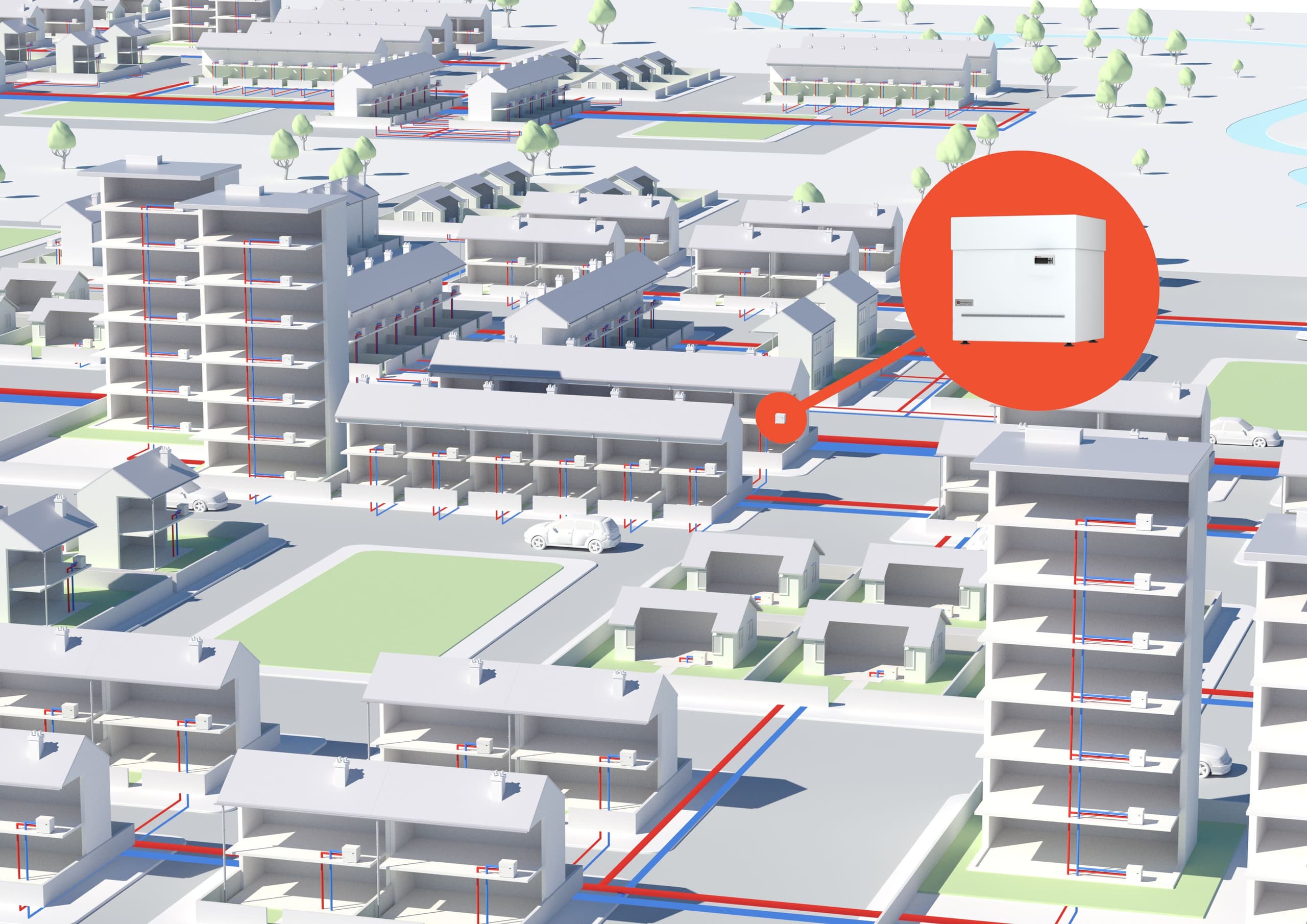
The Difference Between Active Cooling and Passive Cooling
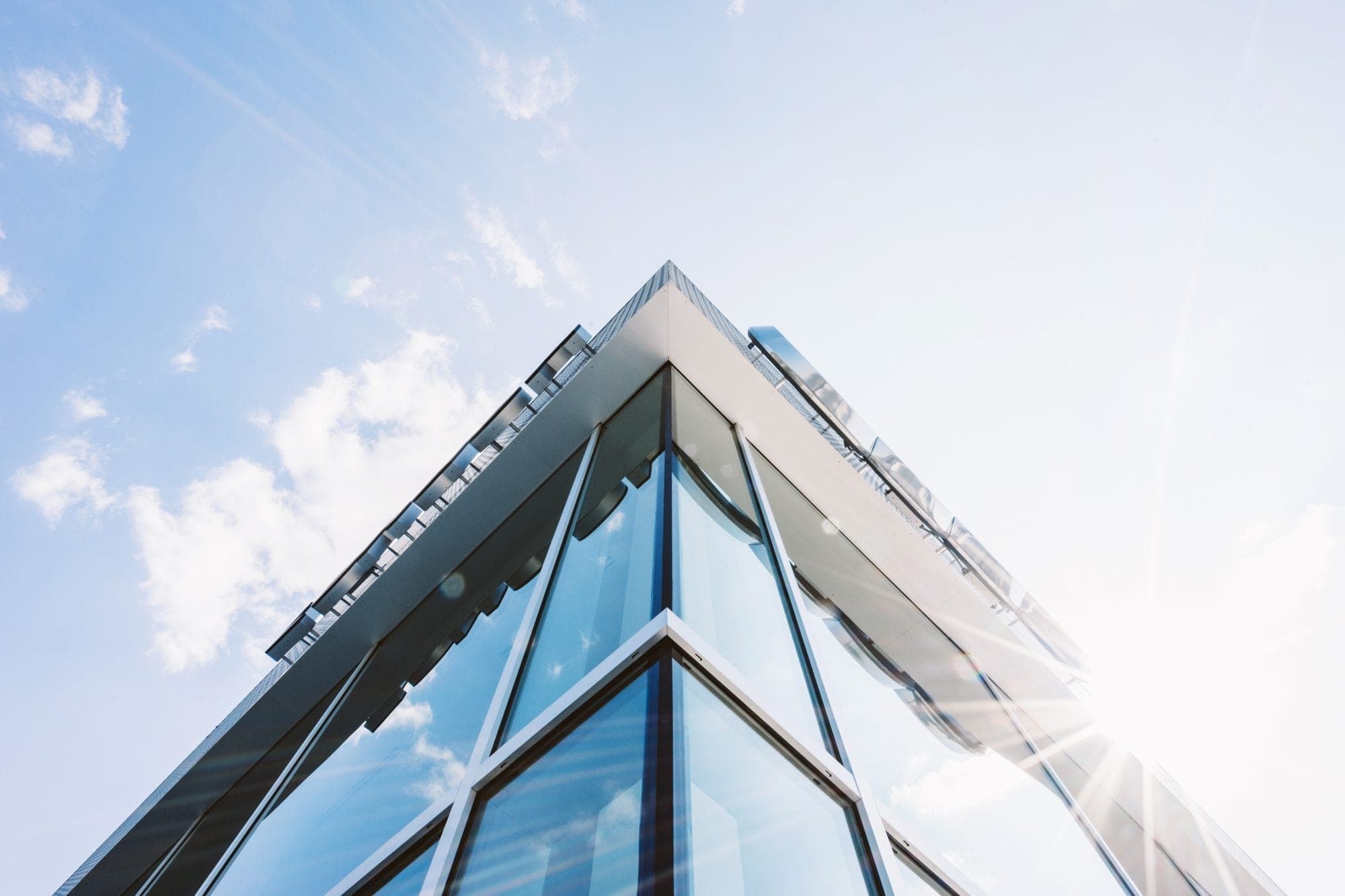
What is passive cooling?
Passive or ‘free’ cooling with a ground source heat pump is an available benefit to Kensa’s technology. Passive cooling provides ultra-low-cost cooling in the summer, whilst re-charging the ground for more efficient heating the following winter.
How does passive cooling work?
By integrating Kensa’s passive cooling module to the Shoebox heat pump or a separate plate heat exchanger to the Evo ground source heat pump, the distribution system bypasses the ground source heat pump and utilises the cooler temperature of the ground (compared to internal building temperatures) to deliver a degree of ‘free’ or passive cooling. The low temperature of the ground cools the property technically via a fan coil, passive beams or other potential systems. This is simply achieved by passing the fluid of the cooling system through a plate heat exchanger with the ground array fluid passing through the other side.
What projects suit passive cooling with heat pumps?
While passive cooling works well in individual properties or communal areas, multiple property schemes featuring Networked Heat Pump systems using Shared Ground Loop Arrays are particularly suited to passive cooling.

Networked Heat Pumps, fitted with the Kensa passive cooling module and connected to an Ambient Heat Network with Shared Ground Loop Arrays, provide a one-stop-shop efficient heating and cooling solution for clusters of multiple buildings and flats.
The Kensa Passive Cooling Module can also be retrofitted to Kensa Shoebox ground source heat pump systems.
Networked Heat Pumps with passive cooling will use the heat removed to recharge the ground array to improve the overall efficiency of the system, rather than just throwing it away.
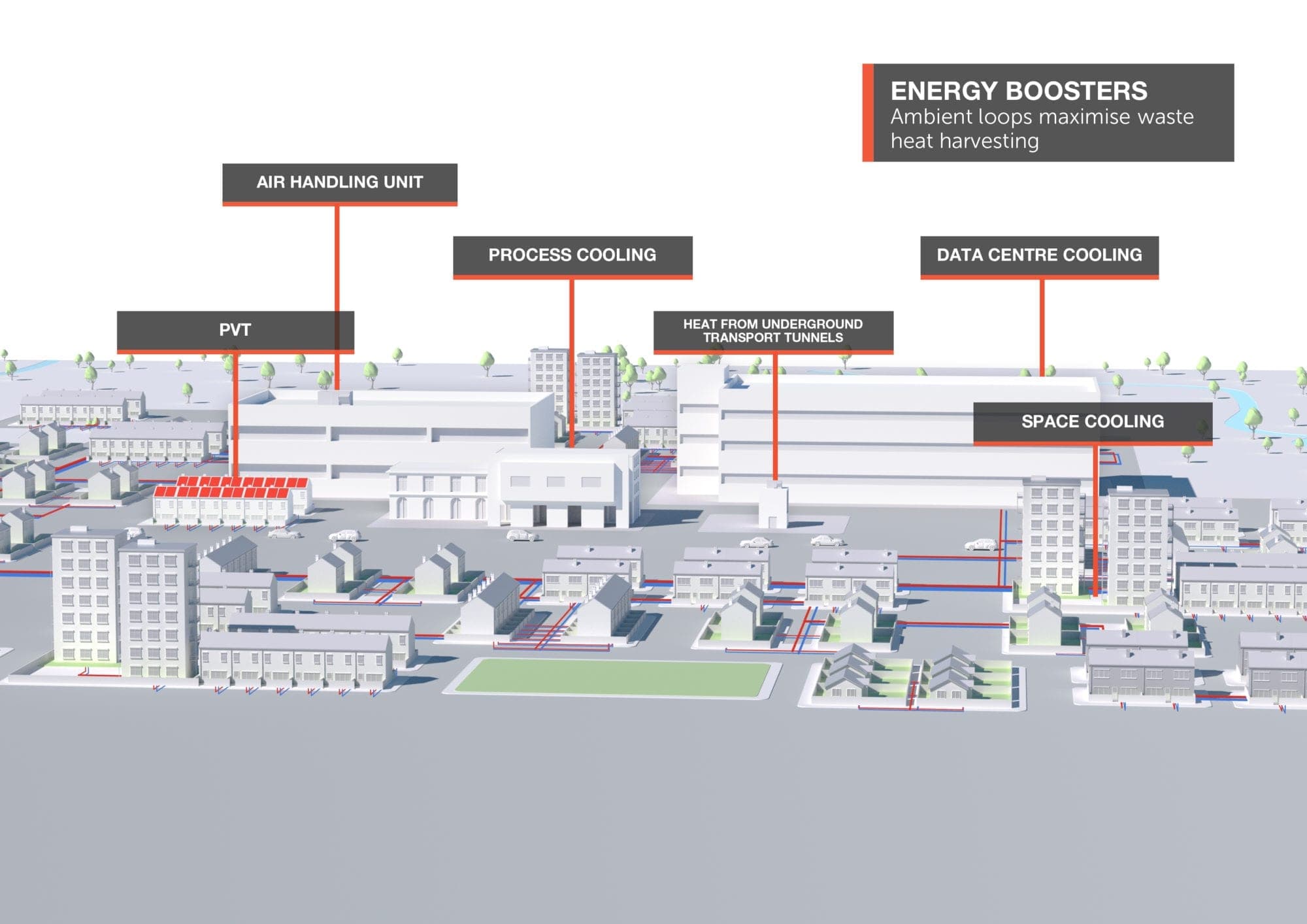
Combined heating & cooling demands
Networked Heat Pumps connecting multiple buildings with a mix of dwellings and commercial buildings create further opportunities. The addition of mixed heating and cooling demands for the diverse building types offers the opportunity for efficiency improvements and reduced capital cost of the ground array, as the balanced load means borehole depths can usually be reduced.
If higher cooling loads are required, such as for glazed offices or server rooms, then dedicated cooling heat pumps can be used to provide active cooling. Connecting these to the same Networked Heat Pump system again gives you the benefit of recycling the waste heat to recharge the ground array and improve heating system efficiency.
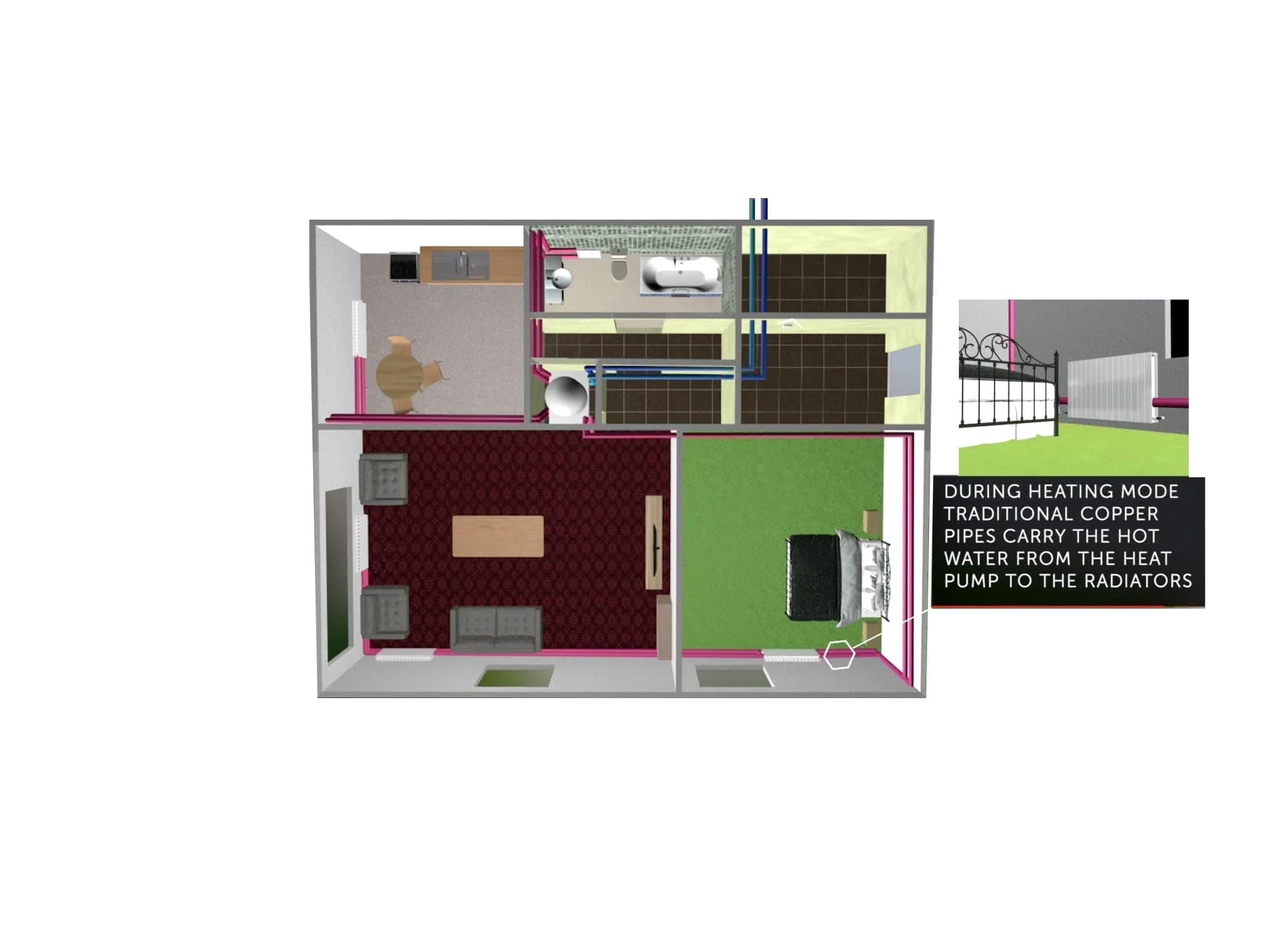
Ultra-efficient cooling
In the summer, the ground is almost always more efficient for cooling than air. So when you combine heating and cooling options together this advantage increases.
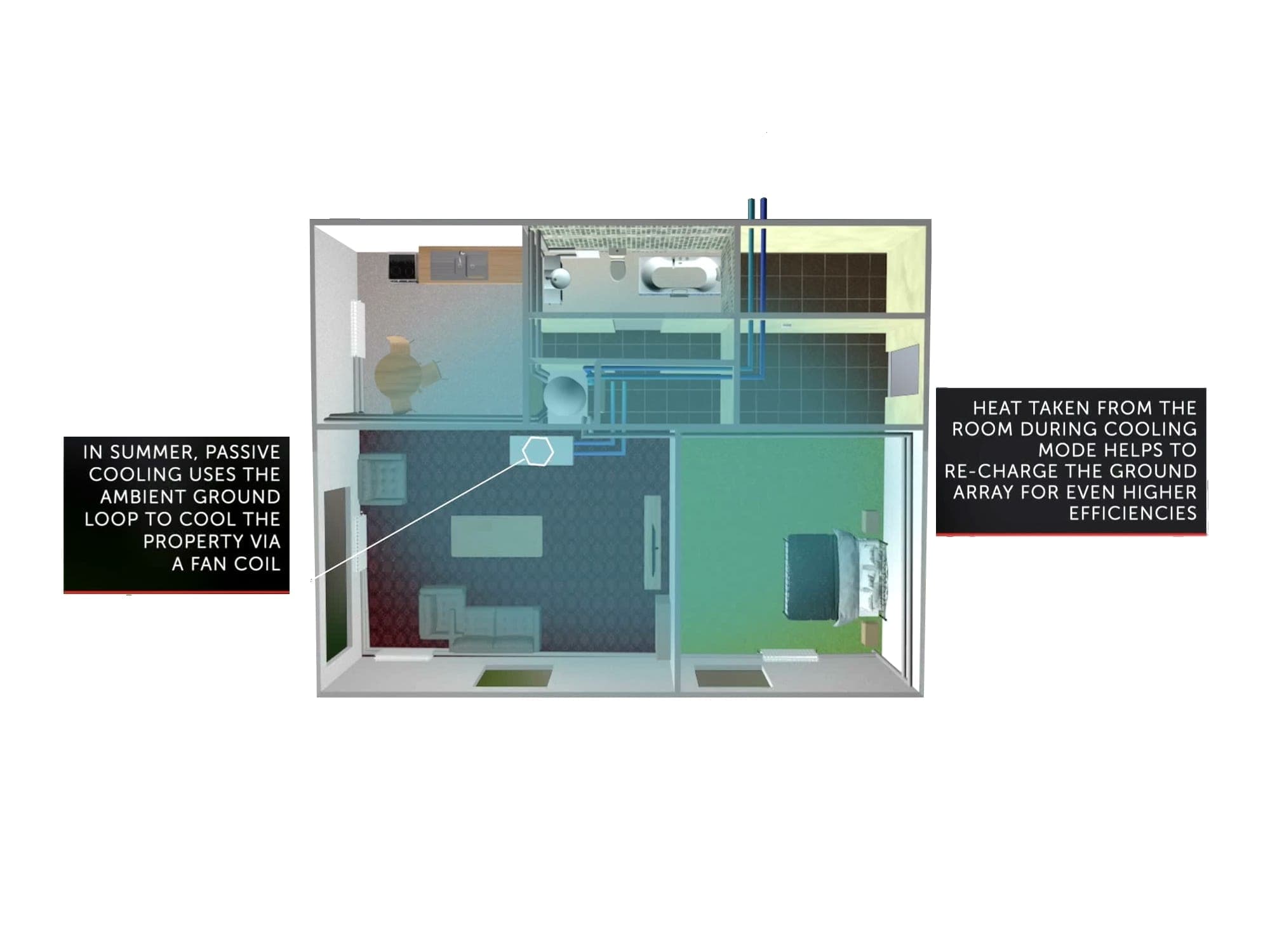
For example, if you have a block of flats with retail space on the ground floor, such as a supermarket, then the annual heating load of the flats could be larger than the annual cooling load of the supermarket. In this scenario, the cold stored in the ground (created by extracting heat from the ground to heat the flats) can be enough to provide all, or much of, the annual cooling demand for the supermarket without the use of a heat pump at all!




What are the advantages of passive cooling?
Networked Heat Pumps, fitted with the Kensa passive cooling module and connected to an Ambient Heat Network with Shared Ground Loop Arrays, provide a one-stop-shop efficient heating and cooling solution for clusters of multiple buildings and flats.
The Kensa Passive Cooling Module can also be retrofitted to Kensa Shoebox ground source heat pump systems.
Networked Heat Pumps with passive cooling will use the heat removed to recharge the ground array to improve the overall efficiency of the system, rather than just throwing it away.
Combined heating & cooling demands
Networked Heat Pumps connecting multiple buildings with a mix of dwellings and commercial buildings create further opportunities. The addition of mixed heating and cooling demands for the diverse building types offers the opportunity for efficiency improvements and reduced capital cost of the ground array, as the balanced load means borehole depths can usually be reduced.
If higher cooling loads are required, such as for glazed offices or server rooms, then dedicated cooling heat pumps can be used to provide active cooling. Connecting these to the same Networked Heat Pump system again gives you the benefit of recycling the waste heat to recharge the ground array and improve heating system efficiency.
Ultra-efficient cooling
In the summer, the ground is almost always more efficient for cooling than air. So when you combine heating and cooling options together this advantage increases.
For example, if you have a block of flats with retail space on the ground floor, such as a supermarket, then the annual heating load of the flats could be larger than the annual cooling load of the supermarket. In this scenario, the cold stored in the ground (created by extracting heat from the ground to heat the flats) can be enough to provide all, or much of, the annual cooling demand for the supermarket without the use of a heat pump at all!
How much does passive cooling cost?
As passive cooling bypasses the heat pump, the only running cost is the circulating pumps and distribution fan, which can typically be around £20 per year. This is a fraction of the cost of air conditioning.
The savings on heating costs will normally offset the running cost of cooling in the summer, so the cost of cooling is neutral – unlike regular air conditioning, where you pay to run a heat pump only to throw this heat energy out of the window!
The coolest bit about passive cooling is that any energy taken out of the building during the cooling process helps to recharge the ground array; this will increase the efficiency of the heat pump when providing hot water through the summer, and also store enough energy in the ground to improve the efficiency of the heat pump when heating the building the following winter.

What is Kensa's passive cooling module?
To help with the installation of passive cooling systems, Kensa has developed a passive cooling module and control wiring centre for use with the Kensa Shoebox only. When linked to Shoebox, this provides the components for a cost-effective cooling system.
The Kensa Passive Cooling Module can also be retrofitted to the Shoebox heat pump.

What is Kensa's passive cooling module?
To help with the installation of passive cooling systems, Kensa has developed a passive cooling module and control wiring centre for use with the Kensa Shoebox only. When linked to Shoebox, this provides the components for a cost-effective cooling system.
The Kensa Passive Cooling Module can also be retrofitted to the Shoebox heat pump.
What is active cooling with heat pumps?
When operating in a reverse mode, ground source heat pumps can provide air conditioning, refrigeration or freezing. This active cooling is achieved by generating chilled water (typically at 6°C to 12°C) to cool the building, operating in a similar manner to a chiller. It is useful for properties that require higher cooling loads, such as glazed offices and server rooms.
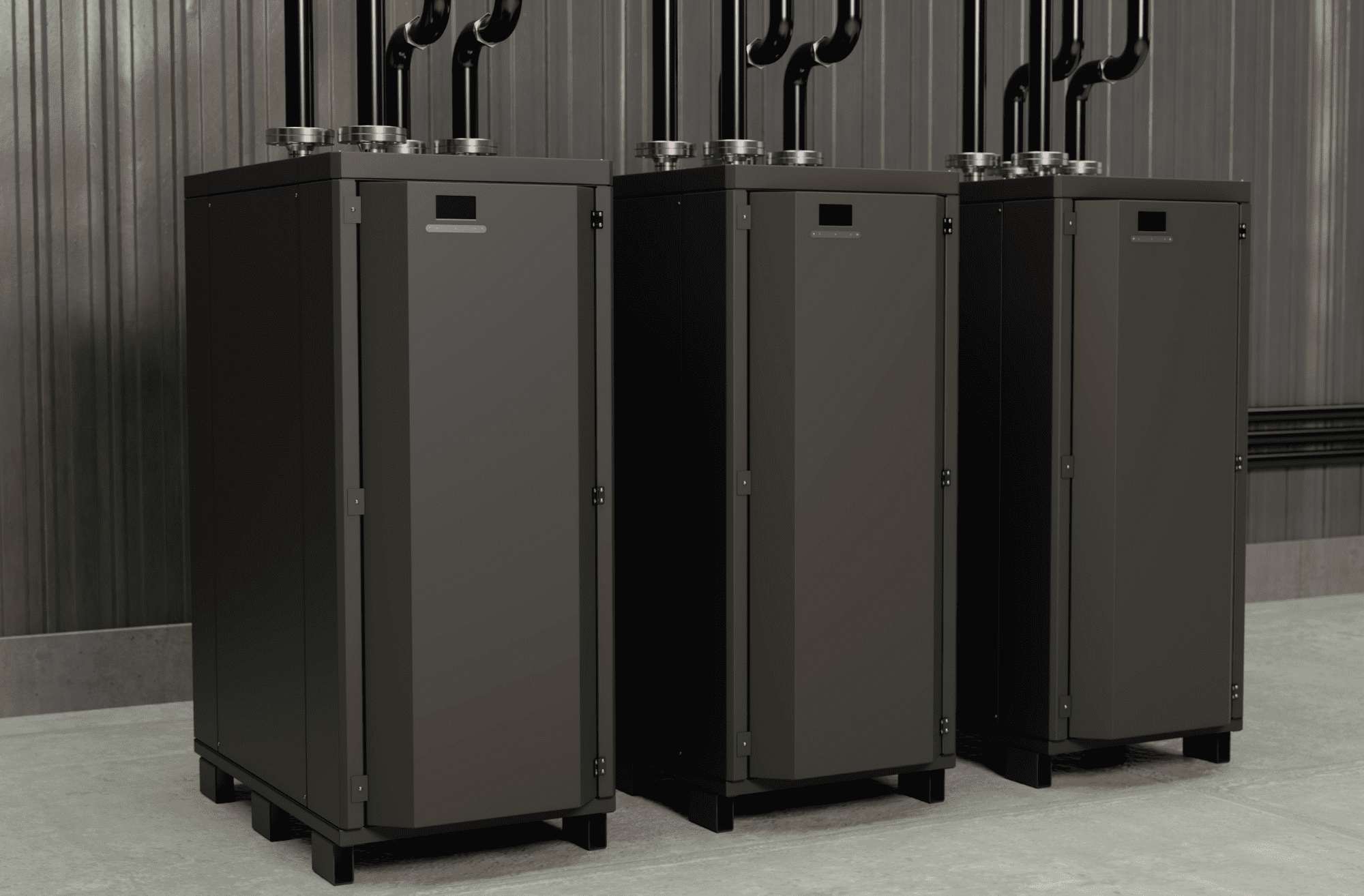
What projects suit active cooling with heat pumps?
For applications requiring year-round cooling, the Kensa Commercial Range ground source heat pumps can be operated in active cooling reverse-cycle mode to deliver temperatures of 6°C – 12°C. Active cooling with ground source heat pumps is particularly commonplace in large commercial applications.
Kensa’s modular Commercial Range heat pumps enable the system to match any required cooling load.

What projects suit active cooling with heat pumps?
For applications requiring year-round cooling, the Kensa Commercial Range ground source heat pumps can be operated in active cooling reverse-cycle mode to deliver temperatures of 6°C – 12°C. Active cooling with ground source heat pumps is particularly commonplace in large commercial applications.
Kensa’s modular Commercial Range heat pumps enable the system to match any required cooling load.
How do I install ground source cooling?
The main skill requirement lies with the system designer. It already requires a specialist ground source designer with knowledge of heat pumps and geology to design a ground source heating system. When you add cooling into this, the level of complication increases. It also requires a higher level of accuracy from the building designer to correctly model the heating and cooling loads. Once the design is complete, the actual physical installation is straightforward and doesn’t require any skills that aren’t already present in the industry.
Kensa can help with the heating and cooling design and provide guidance on installing the ground source heat pump system. For larger-scale projects, Kensa offers complete project management of ground source heating and cooling schemes.
What causes overheating in buildings?
Buildings can overheat for a number of reasons: warmer summers, glazed exteriors, improvements in insulation standards. All of these factors highlight the need for cooling in domestic and commercial buildings. Now, in many modern commercial buildings, the demand for cooling is almost greater than the need for heating.
Glazing
Modern properties, particularly apartment and office blocks, are well insulated and tend to have large amounts of glazing, making them prone to overheating.Traditional central plant systems
In such buildings, a traditional district heating system with a central plant is likely being used. In this system, hot water typically circulates at 65°C to 85°C through a network of pipes around the building. The system doesn’t know when each flat or office wants heating or hot water, so the high temperature circulating the pipework has to be maintained 24/7. This method of transferring heat throughout the building raises the temperature within the building, resulting in further overheating.Pipe insulation degrades over time
Although the pipes in such traditional central plant district heating schemes are insulated, they will still leak some heat into the building. In summer this can cause the building to overheat. Over time, the pipe insulation degrades and often parts of it get damaged, making the problem worse – and of course, these heat losses also have to be paid for in energy bills. Even if the central plant technology being used to provide heat is energy efficient and reduces climate change and air pollution, it can still worsen the overheating issue within the building. It could even be contributing to associated health problems.
Why is overheating in buildings a problem?
As buildings become increasingly airtight and well insulated, the need for cooling in new builds and commercial premises is increasing. The Royal College of General Practitioners even warns that hotter summers and increased air pollution could result in a summer crisis on a parallel with cold-related hospital admissions and excess winter deaths.
Using traditional cooling systems to combat overheating is self-perpetuating. Traditional means to deliver cooling expel hot air and contribute to carbon emissions, both of which ultimately lead to increased outdoor temperatures. The cycle therefore continues.
Wouldn’t it be wonderful if there was a solution to reduce overheating in modern and efficient buildings, and to cool buildings without contributing to air pollution, climate change or urban heat islands? And what if that solution was affordable, or even free?
Cooling with ground source heat pumps is the answer.
How can ground source heat pumps prevent overheating in buildings?
Networked Heat Pumps avoid the common overheating, heat loss and energy waste problems associated with district heating entirely.
In this decentralised approach to district heating, a Shared Ground Loop Array connects ground arrays, such as boreholes, to individual ground source heat pumps in each dwelling.
The ambient heat circulating the building is low temperature (-5°C to 20°C), and the higher grade heat for each dwelling is produced by the heat pump at the point of use. This eliminates any heat loss through the distribution pipework. The pipes are still insulated but only to prevent condensation, not to retain heat.
As such, there is no heat loss from the system to contribute to overheating in risers and corridors.
Furthermore, as the cold side infrastructure extends all the way to the individual property, it is relatively straightforward to add passive cooling to the system.